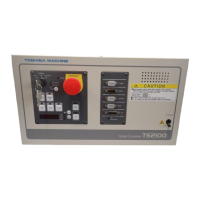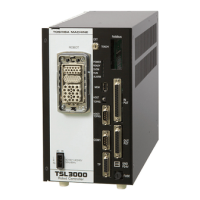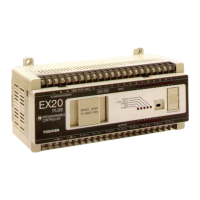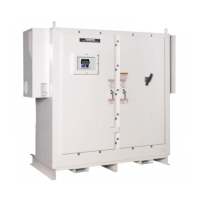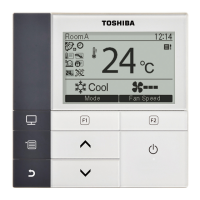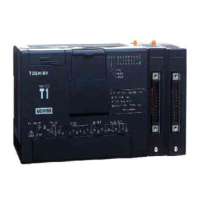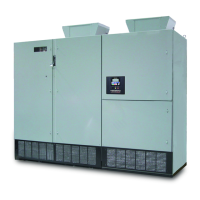GX9 ASD Installation and Operation Manual 109
Frequency Mode 2
Program Fundamental Standard Mode Selection
The Frequency Mode 2 setting establishes an alternate source of the
frequency-control input for the ASD. Parameter F200, in conjunction with the
setting of F208, allows for switching control between Frequency Mode 1 and
Frequency Mode 2 under user-set conditions.
See F004 and F200 for additional information on this setting.
Settings:
1 — VI/II
2 — RR
3 — RX
4 — RX2
5 — CN8 Option
6 — Binary/BCD (Option)
7 — Common Serial (TTL)
8 — RS232/RS485
9 — Communication Option Board
10 — UP/DOWN Frequency
11 — Pulse Input (Option)
Direct Access Number — F207
Parameter Type — Selection List
Factory Default — VI/II
Changeable During Run — Yes
Frequency Mode Priority Switching Frequency
Program Fundamental Standard Mode Selection
This parameter establishes a threshold frequency that will be used as a reference
when determining when to switch the output frequency control source from the
Frequency Mode 1 setting to the Frequency Mode 2 setting.
See F200 for additional information on this setting.
Direct Access Number — F208
Parameter Type — Numerical
Factory Default — 1.0
Changeable During Run — Yes
Minimum — 0.1
Maximum — Max. Freq. (F011)
Units — Hz
Analog Input Filter
Program Frequency Analog Filter
Analog filtering is applied after the analog reference signal is converted to a
digital signal. The type of filtering used is Rolling Average over time.
Settings:
0 — None
1 — Small
2 — Medium
3 — Large
The analog input signal is sampled and converted to a digital signal. With no
filtering applied, the resulting digital value is scaled for use by the
microprocessor of the ASD.
If the filtering selection Small is selected, the ASD averages the last 8 mS of
sampled signal and converted (digital) values. The rolling average is updated
(every 4 µS) and scaled for use by the microprocessor.
This holds true for the Medium, Large, and Huge selections providing a larger
sample to produce the average for use by the microprocessor.
False responses to electrical noise are eliminated with no loss in bandwidth
because the value used by the ASD is the average value of several samples.
Direct Access Number — F209
Parameter Type — Selection List
Factory Default — None
Changeable During Run — Yes
F207 F209
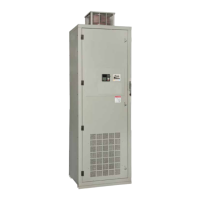
